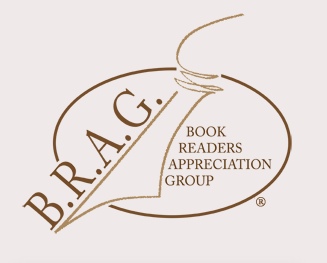Our first encounter with Romans is often a film or TV series depicting soldiers marching in armour, being tough, shouting and thrusting a sword into some barbarian in a dark, wet and enemy-infested wood. Or perhaps we think about the ruins left of magnificent imperial or public buildings?
But what about the calmer side of Roman life? Where did the civilian Romans live? The very rich and/or powerful lived in palaces or extensive town villas, but the middle-class merchants who had done well, or professional families, lived in something like this:
Model of a Roman townhouse (domus)
 
| Atrium |
formal reception hall |
| Ala |
wings/large alcoves opening from the atrium |
| Cubiculum |
small room/bedroom |
| Culina |
kitchen |
| Exedra |
garden room |
| Impluvium |
sunken part of the atrium in to catch and carry away rainwater |
| Oecus |
salon/large dining room |
| Peristylium |
colonnaded garden |
| Taverna |
(wine) shop |
| Tablinium |
office/study |
| Triclinium |
dining room |
| Vestibulum |
entrance hall |
 Impluvium and atrium This is based on a house lived in by a middle ranking Roman in Pompeii.
 Peristylium Most families, in more modest circumstances, lived in one or two rooms in apartment blocks of varying stability called insulae. Although kitchen and latrines could be shared, the blocks did have running water and sanitation. Rooms could be owned or rented. They were built in timber, mud brick, and later primitive concrete and supposed to be restricted in height to about 20 metres. Some rare examples survive in Rome at the foot of the Capitoline Hill and in Ostia Antica, Rome’s ancient port.
 Insulae (apartment blocks) at the foot of the Capitoline Hill, Rome  Insulae in Ostia Antica Carina and her family in 21st century Roma Nova live in a large townhouse still called a domus – Domus Mitelarum – which has an atrium with an oculus – a bull’s eye – in the roof to let in light, but no longer rainwater – it’s been glazed over as has the impluvium. But there are alcoves (ala) to sit in and a peristyle garden in the old part of the house.
Model and map courtesy of the University of Pennsylvania Museum of Archaeology via http://www.vroma.org/~bmcmanus/house.html
Alison Morton is the author of Roma Nova thrillers, INCEPTIO, and PERFIDITAS. Third in series, SUCCESSIO, is out early summer 2014.
If you enjoyed this post, do share it with your friends!Like this:Like Loading...
Enter the Goodreads giveaway by 3 March 2014 to win a FREE posted to you signed copy of PERFIDITAS!
Alison Morton is the author of Roma Nova thrillers, INCEPTIO, and PERFIDITAS. Third in series, SUCCESSIO, is out early summer 2014.
If you enjoyed this post, do share it with your friends!Like this:Like Loading...
 At book club yesterday, we discussed many things. Books, obviously, but the conversation wandered on to reader expectations and I threw out the question about who owns the story in the book – the author, the reader, both or none of the above? At book club yesterday, we discussed many things. Books, obviously, but the conversation wandered on to reader expectations and I threw out the question about who owns the story in the book – the author, the reader, both or none of the above?
My stories start in my head, but they are the result of my imagination and experience, sliced up with memories of books read since childhood, with a large side-helping of films watched and radio plays listened to. Add in a sprinkling of people encountered, conversations had and places visited and you’re there.
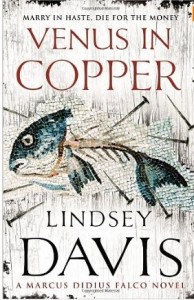 But once anybody else discovers your story, in this case via a book, does part of it become theirs? When I read a Lindsey Davis’ Roman detective Falco story, I’m walking beside Falco, Helena and Petro. I know what they like, how they think, I feel their emotions, laugh at their jokes, mourn with their losses. And I mourn when the story finishes because a door on part of my life slams in my face. And, of course, only I have this perception and level of participation. No other reader. Oh, no, no. I definitely own part of Falco’s world. So when Lindsey Davis concluded the series on book 20, I groaned. She’s probably heartily sick of writing these stories. But she’s thrown us a new series, featuring Falco’s daughter. We’ll see… But once anybody else discovers your story, in this case via a book, does part of it become theirs? When I read a Lindsey Davis’ Roman detective Falco story, I’m walking beside Falco, Helena and Petro. I know what they like, how they think, I feel their emotions, laugh at their jokes, mourn with their losses. And I mourn when the story finishes because a door on part of my life slams in my face. And, of course, only I have this perception and level of participation. No other reader. Oh, no, no. I definitely own part of Falco’s world. So when Lindsey Davis concluded the series on book 20, I groaned. She’s probably heartily sick of writing these stories. But she’s thrown us a new series, featuring Falco’s daughter. We’ll see…
J K Rowling received a lot of flak when she admitted she may have got it wrong by matching Hermione with Ron in the Harry Potter story. She said it was a personal wish rather than a literary trope. Is the story a public possession, or is she ‘permitted’ as the creator to do what she likes with it?
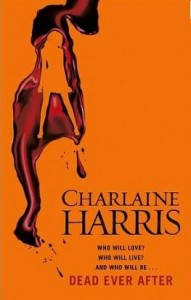 Southern vampire mystery writer Charlaine Harris whose Sookie Stackhouse stories were turned into the HBO TrueBlood series received death threats, suicide threats and even threats to cancel book orders following the final novel. Her sin? She’d given her bestselling series a romantic conclusion that not everyone was happy with. Southern vampire mystery writer Charlaine Harris whose Sookie Stackhouse stories were turned into the HBO TrueBlood series received death threats, suicide threats and even threats to cancel book orders following the final novel. Her sin? She’d given her bestselling series a romantic conclusion that not everyone was happy with.
Readers and writers may not necessarily divide along predictable lines on this. What do you think?
Updated 2018:
Alison Morton is the author of Roma Nova thrillers INCEPTIO, PERFIDITAS, SUCCESSIO, AURELIA, INSURRECTIO and RETALIO. CARINA, a novella, is available for download now. Audiobooks are available for the first four of the series.
Find out more about Roma Nova, its origins, stories and heroines… Get INCEPTIO, the series starter, for FREE when you sign up to Alison’s free monthly email newsletter
If you enjoyed this post, do share it with your friends!Like this:Like Loading...
 My first special guest this spring is Helen Hollick, author of The Pendragon’s Banner trilogy (The Kingmaking, Pendragon’s Banner, Shadow of the King), a re-telling of the King Arthur legend where Arthur Pendragon is a post-Roman battle-hardened warlord. Before that, she wrote The Saxon Series (Harold the King (US – I Am the Chosen King) and A Hollow Crown (US – The Forever Queen). Now she’s into pirates, especially Captain Jesamiah Acorne, in her Sea Witch historical fantasy series for adults. So let’s find out why… My first special guest this spring is Helen Hollick, author of The Pendragon’s Banner trilogy (The Kingmaking, Pendragon’s Banner, Shadow of the King), a re-telling of the King Arthur legend where Arthur Pendragon is a post-Roman battle-hardened warlord. Before that, she wrote The Saxon Series (Harold the King (US – I Am the Chosen King) and A Hollow Crown (US – The Forever Queen). Now she’s into pirates, especially Captain Jesamiah Acorne, in her Sea Witch historical fantasy series for adults. So let’s find out why…
Welcome Helen!
The question I’ve been longing to ask you – why Arthur?
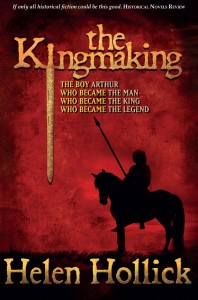 More than thirty years ago I worked in a public library. My passion was for science fiction and fantasy, with unfinished scribbled stories written on scraps of paper. I stumbled upon Mary Stewart’s The Hollow Hills and The Crystal Cave, and loved them. Here was a blend of believable fantasy entwined within an historical novel, and the author’s note mentioned that if Arthur had existed it would have been in that Dark Age period between the going of the Romans and the coming of the Anglo-Saxons, the late fifth, early sixth century. More than thirty years ago I worked in a public library. My passion was for science fiction and fantasy, with unfinished scribbled stories written on scraps of paper. I stumbled upon Mary Stewart’s The Hollow Hills and The Crystal Cave, and loved them. Here was a blend of believable fantasy entwined within an historical novel, and the author’s note mentioned that if Arthur had existed it would have been in that Dark Age period between the going of the Romans and the coming of the Anglo-Saxons, the late fifth, early sixth century.
I had never been drawn to the traditional Arthurian tales of knights in armour, courtly love or the search for the Holy Grail. Guinevere always annoyed me and I couldn’t stand Lancelot. These stories mirrored the post-Norman Conquest world, the Crusades, Henry and Eleanor and Richard I, where, to my mind, there was no place for Arthur. They did not feel right, but Arthur as a post-Roman warlord? Ah! That was intriguing!
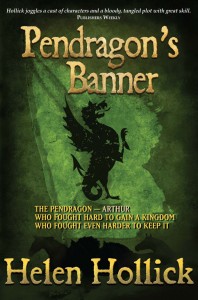 I devoured non-fiction to develop my own ideas, and thirsted for novels. One of the most notable was Sword At Sunset by Rosemary Sutcliff (I still have my somewhat worn edition). Another was The Mists of Avalon by Marion Zimmer Bradley. A good story but there were errors of historical detail, and Guinevere drove me to screaming point! Why was the character so weak? So stupid? Frankly, I saw her as a spoilt madam. I devoured non-fiction to develop my own ideas, and thirsted for novels. One of the most notable was Sword At Sunset by Rosemary Sutcliff (I still have my somewhat worn edition). Another was The Mists of Avalon by Marion Zimmer Bradley. A good story but there were errors of historical detail, and Guinevere drove me to screaming point! Why was the character so weak? So stupid? Frankly, I saw her as a spoilt madam.
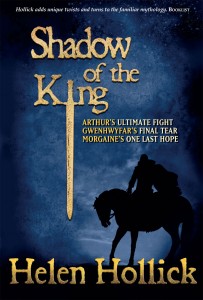 I cast the novel aside and decided to write the story as I saw Gwenhwyfar (my spelling of her name). The several false starts were frustrating, page after page ended up scrunched into a ball and tossed into the bin – then I realised that telling it from her point of view was not going to work. I needed to get into Arthur’s skin, not hers. I cast the novel aside and decided to write the story as I saw Gwenhwyfar (my spelling of her name). The several false starts were frustrating, page after page ended up scrunched into a ball and tossed into the bin – then I realised that telling it from her point of view was not going to work. I needed to get into Arthur’s skin, not hers.
The result, after ten years of stop-start writing was a draft manuscript of what became The Kingmaking and Pendragon’s Banner followed by a publishing contract with William Heinemann.
So in 2006 you switched periods and subject – why pirates?
After finishing my Arthurian trilogy with the third book, Shadow of the King, I went on to write about the Battle of Hastings from the English point of view (Harold the King UK title and I am the Chosen King US title). That was followed by a prequel about the Saxon Queen, Emma and her two husbands, Æthleread and King Cnut (Canute). Unfortunately, interest in historical fiction had taken a tumble and my publisher lost interest in my books.
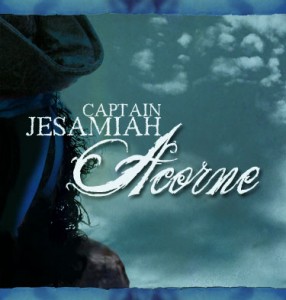 My agent suggested I go back to fantasy, which appealed as I had become interested in the Golden Age of Piracy (early seventeenth century) after falling for Johnny Depp’s character Jack Sparrow. Pirates meant swashbuckling adventure and tongue-in-cheek fun. I wanted to read books that were like The Curse of The Black Pearl, the first Pirates of the Caribbean movie, but beyond children’s stories I could find nothing in print. There were many seafaring novels: Patrick O’Brian, C.S. Forrester, Julian Stockwin… all good reads, but serious Royal Navy adventures set during the Napoleonic Wars. Where was the sexy hero with gold earring and cutlass, swigging rum and eyeing the wenches in a local tavern? Where was the fun of make-believe? I gave up the search and wrote Sea Witch. My agent suggested I go back to fantasy, which appealed as I had become interested in the Golden Age of Piracy (early seventeenth century) after falling for Johnny Depp’s character Jack Sparrow. Pirates meant swashbuckling adventure and tongue-in-cheek fun. I wanted to read books that were like The Curse of The Black Pearl, the first Pirates of the Caribbean movie, but beyond children’s stories I could find nothing in print. There were many seafaring novels: Patrick O’Brian, C.S. Forrester, Julian Stockwin… all good reads, but serious Royal Navy adventures set during the Napoleonic Wars. Where was the sexy hero with gold earring and cutlass, swigging rum and eyeing the wenches in a local tavern? Where was the fun of make-believe? I gave up the search and wrote Sea Witch.
My lead character is Captain Jesamiah Acorne, his girlfriend is Tiola Oldstagh, a midwife, healer – and a white witch. I describe Jesamiah as a cross between Jack Aubrey, Jack Sparrow, James Bond, Richard Sharpe (Bernard Cornwell’s hero played on TV by Sean Bean) and Indiana Jones.
The only problem, my agent regarded pirate stories as children’s books and Sea Witch was very firmly adult. She told me to re-write it for teenage boys. I refused. It looked like Sea Witch was to be scuppered before she even set sail as the manuscript was returned to me with red lines across fifty pages with sarcastic comments scrawled in the margin. Soon after came a telephone call informing me that Heinemann had dropped me, so as I no longer needed an agent: goodbye.
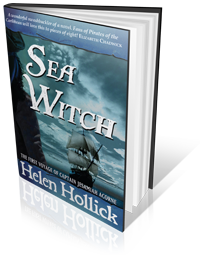 I was gutted but I was not going to abandon my pirate. I believed in him too much. My option was to self-publish my backlist, but depressingly, I received rejects from publishers for Sea Witch on the grounds that, although well-written and exciting, adults were not interested in reading pirate adventures. Had these people not heard of Jack Sparrow or the adult following that had burst like a cannon blast upon the world of entertainment? Forums and social media sites were crammed with adults – men and women – talking about pirates, re-enacting pirates, craving pirates…. I was gutted but I was not going to abandon my pirate. I believed in him too much. My option was to self-publish my backlist, but depressingly, I received rejects from publishers for Sea Witch on the grounds that, although well-written and exciting, adults were not interested in reading pirate adventures. Had these people not heard of Jack Sparrow or the adult following that had burst like a cannon blast upon the world of entertainment? Forums and social media sites were crammed with adults – men and women – talking about pirates, re-enacting pirates, craving pirates….
So I self-published Sea Witch as well. Best decision I ever made.
 Jesamiah has a massive fan base and I have started his fifth Voyage: On The Account. Once again he finds himself in trouble with various characters who are up to no good, excise men who want him hanged, colony governors who need his ‘experienced’ help, and black-hearted pirates who don’t. There are seductive women who want his other experienced charms, and a wife who is annoyed because of them! Jesamiah has a massive fan base and I have started his fifth Voyage: On The Account. Once again he finds himself in trouble with various characters who are up to no good, excise men who want him hanged, colony governors who need his ‘experienced’ help, and black-hearted pirates who don’t. There are seductive women who want his other experienced charms, and a wife who is annoyed because of them!
My Sea Witch Voyages are fun to write and read; they are not meant to be taken seriously but as adult escapism, which is why exciting stories about charismatic pirates, despite what publishers and ex-agents think, are popular with adult readers!
Well, I loved Sea Witch, the first in the series. The others are on my TBR pile singing a siren song enticing me away from my own writing. Or maybe it’s Tiola…
More about Helen here: Let us Talk of Many Things; of Books and Queens and Pirates, of History and Kings…And Helen’s books here: Helen Hollick’s World of Books
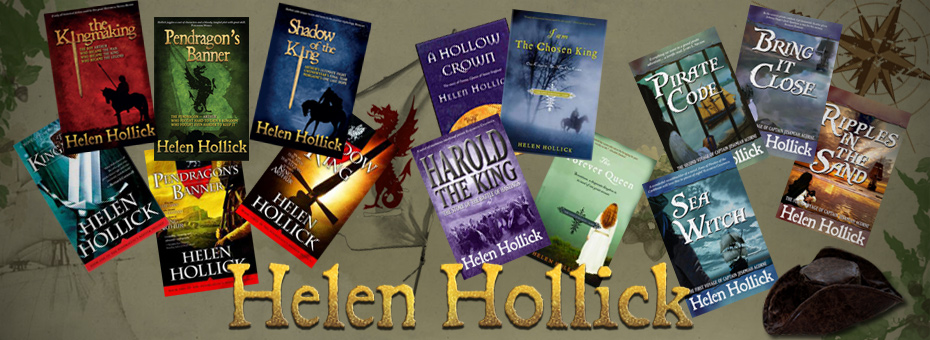
Roma Nova
Alison Morton is the author of Roma Nova thrillers, INCEPTIO, PERFIDITAS and SUCCESSIO. The fourth book, AURELIA, is now out.
Find out Roma Nova news and book progress before everybody else, and take part in giveaways by signing up for her free monthly email newsletter.
If you enjoyed this post, do share it with your friends!Like this:Like Loading...
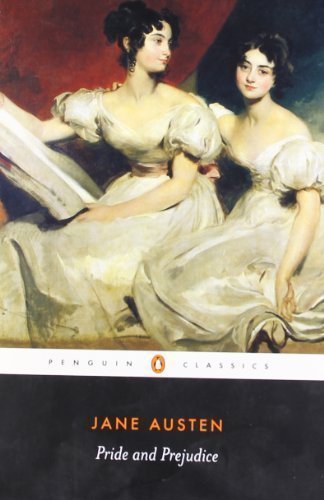 Are an American high school or the subcontinent an appropriate place for Jane Austen’s stories? Do we want to imagine what Penelope thought about Odysseus? And should Sherlock Holmes use a smart phone? Are an American high school or the subcontinent an appropriate place for Jane Austen’s stories? Do we want to imagine what Penelope thought about Odysseus? And should Sherlock Holmes use a smart phone?
I love Pride and Prejudice and have read it so many times I know exactly what line or comic twist is coming next. Somehow the anticipation is delicious each time. We’ve loved or loathed the many film adaptations from Greer Garson/Laurence Olivier to Keira Knightly/Matthew Macfadyen, not forgetting the magnificent TV series with Jennifer Ehle and Colin Firth.
 But do we love Bridget Jones’ Diary which its author, Helen Fielding, openly admits is based on P&P? Fielding plays it firmly tongue in cheek, calling the love interest Mark Darcy, an irony compounded in the film version with Colin Firth playing Darcy. However, Bridget is no savvy, clever Lizzie. But do we love Bridget Jones’ Diary which its author, Helen Fielding, openly admits is based on P&P? Fielding plays it firmly tongue in cheek, calling the love interest Mark Darcy, an irony compounded in the film version with Colin Firth playing Darcy. However, Bridget is no savvy, clever Lizzie.
Gurinder Chadda reflected the Lizzie character better in her film Bride & Prejudice, and the fairy-tale subcontinental setting allows the busybody mother wishing to marry the girls off to fit neatly into the culture of the traditional Asian family. The Lizzie Bennet Diaries in vlog form are right at the other end in an original take for the digital age.
 The film Clueless (Emma), set in privileged Beverley Hills with a wealthy heroine basking in her peers’ popularity, and eager to mould others’ lives, was a surprise hit when released in 1995. Changing all names, except a nod to Mr Elton, it’s a fresh, if a little arch, take with clever Valley-speak dialogue. The film Clueless (Emma), set in privileged Beverley Hills with a wealthy heroine basking in her peers’ popularity, and eager to mould others’ lives, was a surprise hit when released in 1995. Changing all names, except a nod to Mr Elton, it’s a fresh, if a little arch, take with clever Valley-speak dialogue.
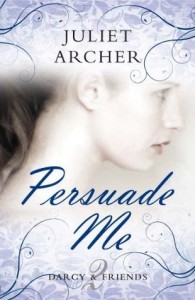 Juliet Archer’s project of rewriting all of Jane Austen’s novels intrigues me. I recently enjoyed her Persuade Me (Persuasion) which retained the essentials and spirit of the original story but reframed it very deftly in the 21st century with sub-plots and crossed wires. Juliet Archer’s project of rewriting all of Jane Austen’s novels intrigues me. I recently enjoyed her Persuade Me (Persuasion) which retained the essentials and spirit of the original story but reframed it very deftly in the 21st century with sub-plots and crossed wires.
Shakespeare is another fertile source of updates; Romeo and Juliet appears in many versions, but notably as West Side Story, popular as a film and stage musical and constantly revived with the latest version on the New York stage in 2009.
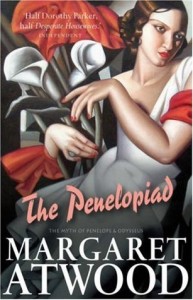 The most enjoyable revamp I’ve read recently is Margaret Attwood’s The Penelopiad. A new twist to the tale of Odysseus from the point of view of his clever and sly wife now dead and spending all eternity in Hades. Here, she tells the reader the story of her life with wit and humour as well as poetry. The most enjoyable revamp I’ve read recently is Margaret Attwood’s The Penelopiad. A new twist to the tale of Odysseus from the point of view of his clever and sly wife now dead and spending all eternity in Hades. Here, she tells the reader the story of her life with wit and humour as well as poetry.
And then there’s the wildly popular Sherlock with his fearsome mind, tortured soul and almost intuitive use of a smartphone. Is this an update or a contemporary adaptation, and what’s the difference?
 Conan Doyle fans have been generally appreciative. Gwilym Mumford, for The Guardian, suggested that “this has to do with the fact that Moffat and Gatiss are enormously knowledgeable about Conan Doyle’s work, and their reimagining incorporates big- and small-screen adaptations of Holmes as well as the original stories.” The really good news is that publishers and retailers reported a 180% rise in sales of Sherlock Holmes books during the first series’ broadcast. Conan Doyle fans have been generally appreciative. Gwilym Mumford, for The Guardian, suggested that “this has to do with the fact that Moffat and Gatiss are enormously knowledgeable about Conan Doyle’s work, and their reimagining incorporates big- and small-screen adaptations of Holmes as well as the original stories.” The really good news is that publishers and retailers reported a 180% rise in sales of Sherlock Holmes books during the first series’ broadcast.
So, original, update or revamp? Which do you prefer?
Alison Morton is the author of Roma Nova thrillers, INCEPTIO, and PERFIDITAS. Third in series, SUCCESSIO, is out early summer 2014.
If you enjoyed this post, do share it with your friends!Like this:Like Loading...
|
Subscribe to Blog via Email
Join 50 other subscribers.
Categories
Archive
|

























